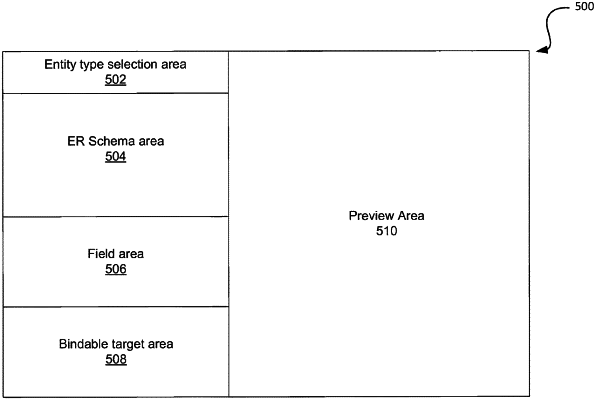| CPC G06F 16/252 (2019.01) [G06F 16/211 (2019.01); G06F 16/2423 (2019.01); G06F 16/2428 (2019.01); G06F 16/288 (2019.01); G06T 11/206 (2013.01)] | 19 Claims |

|
1. A user interface for allowing a user to create a chart, the user interface comprising:
an entity type selection area for allowing a user to select an entity type from a plurality of entity types available in an entity-relationship schema of a database;
an explorer for displaying the entity-relationship schema associated with the selected entity type and allowing a user to navigate the schema by selecting one or more relationship paths to display one or more fields of an entity associated with the selected relationship path, whereby each relationship path corresponds to the entity type according to the entity relationship schema, wherein each relationship path defines a logical relationship between one type of entity and a different type of entity, and wherein the user can further extend the relationship path by selecting from relationship types that are connected to the corresponding entity type in either direction according to the entity relationship schema;
a list area for displaying one or more available fields of the entity type associated with the currently selected relationship path selected from the explorer; and
a target area configured to enable a user to assign one or more of the available fields to bindable data targets to create a binding instance to create the chart, wherein each binding instance contains information about the selected relationship path at the time the one or more available fields are assigned to the bindable data targets, each relationship path is represented by linking to a plurality of relationship path instances of the relationship path, in an order of the relationship path, each relationship path instance representing one link in the relationship path, and when the one or more available fields are assigned to the bindable data targets, a user action activates display of the chart.
|